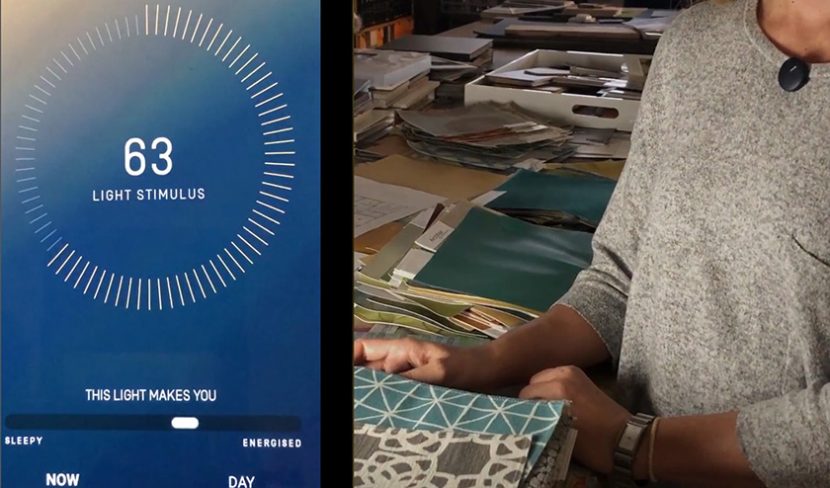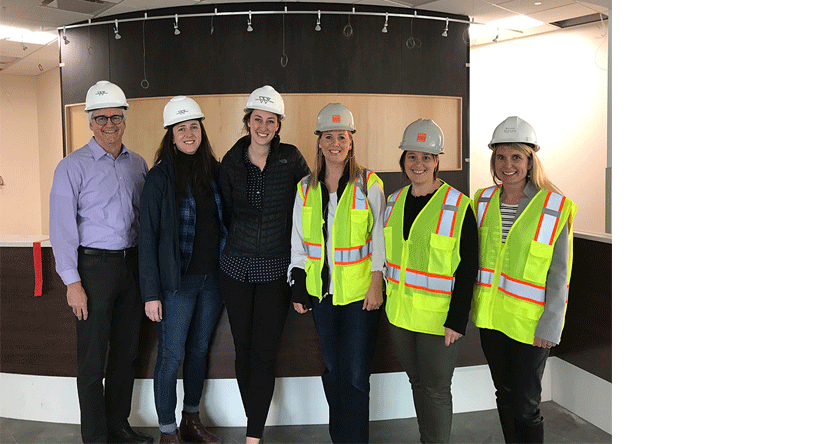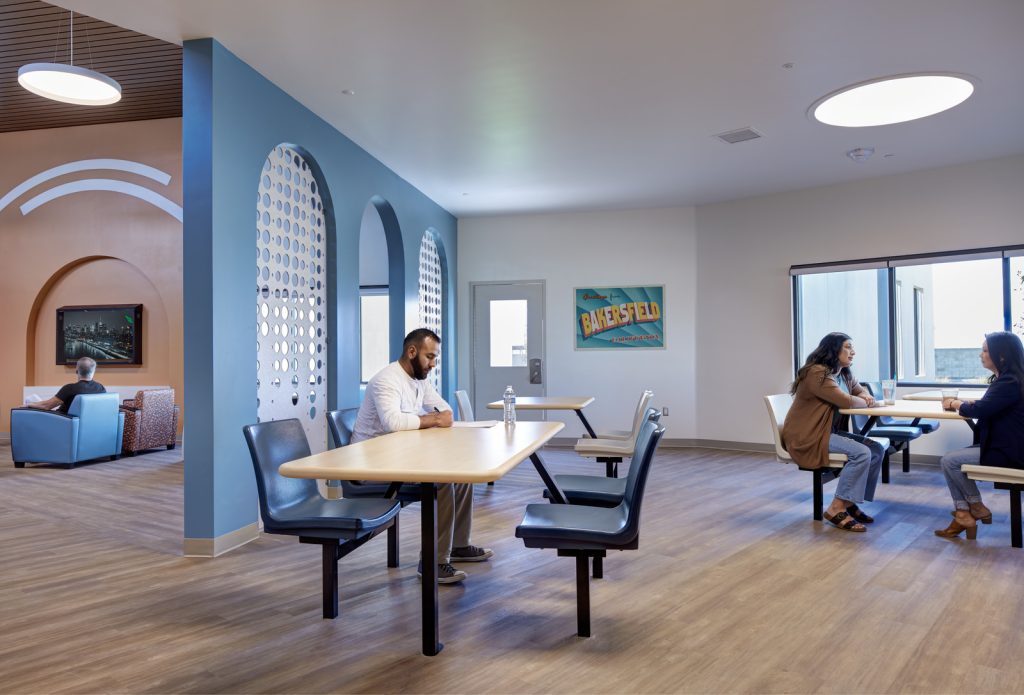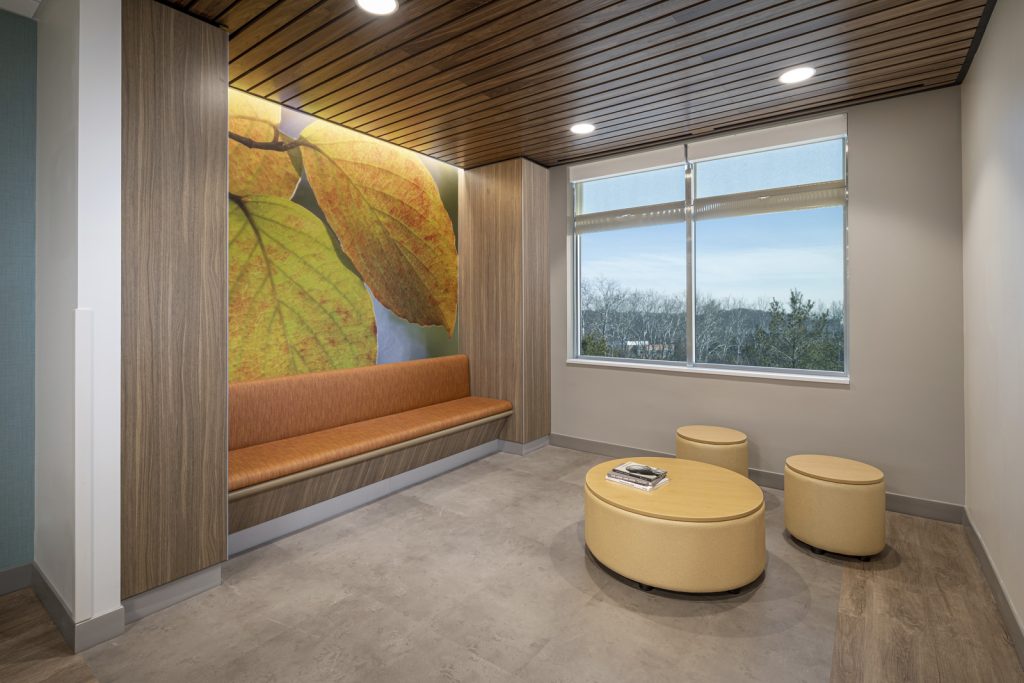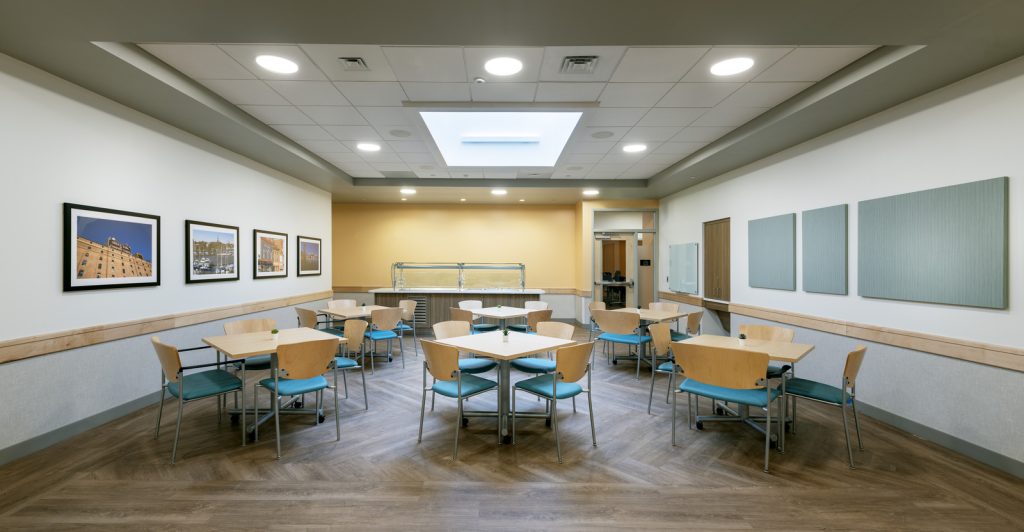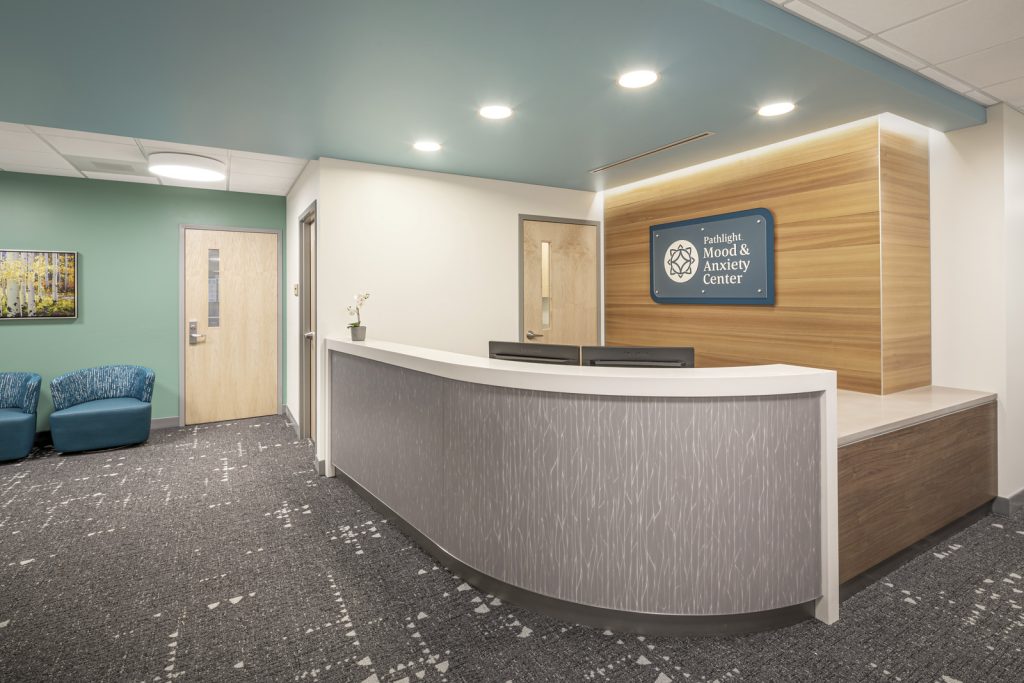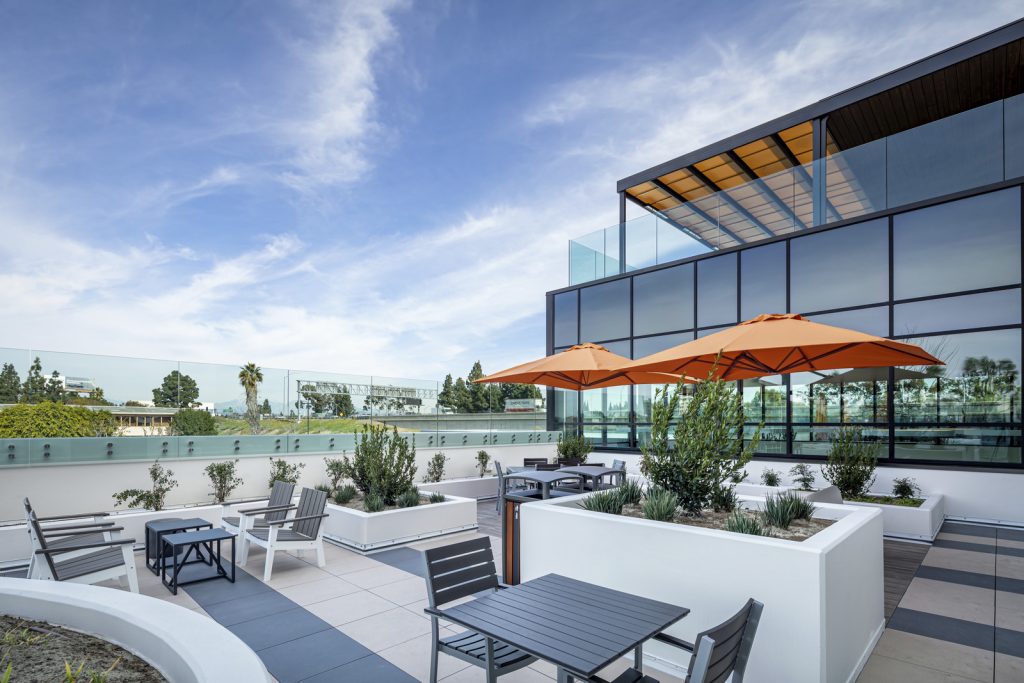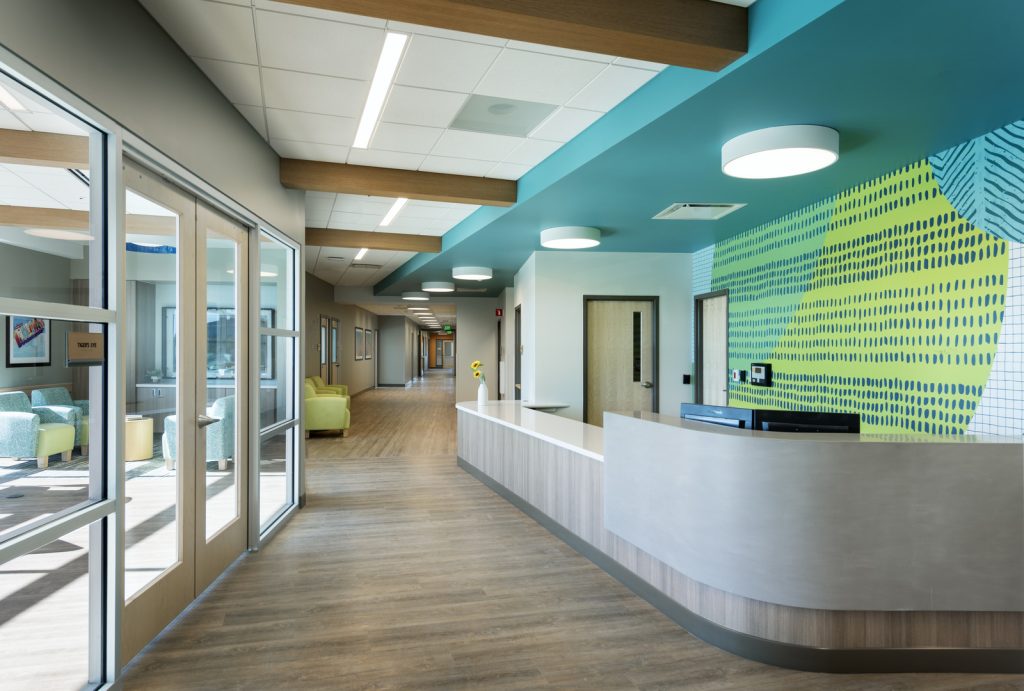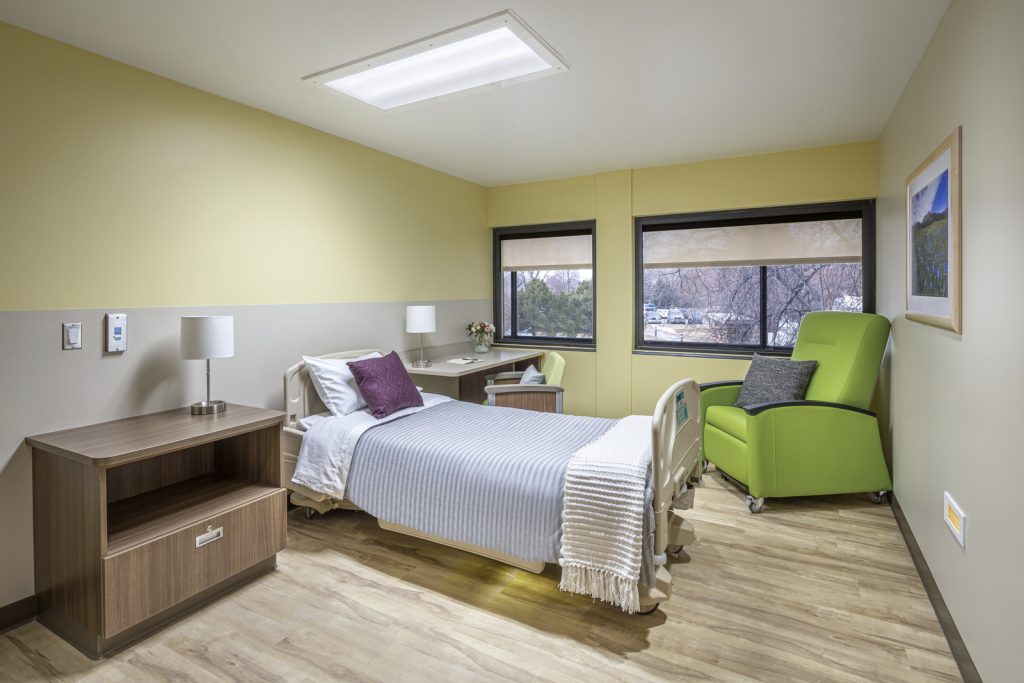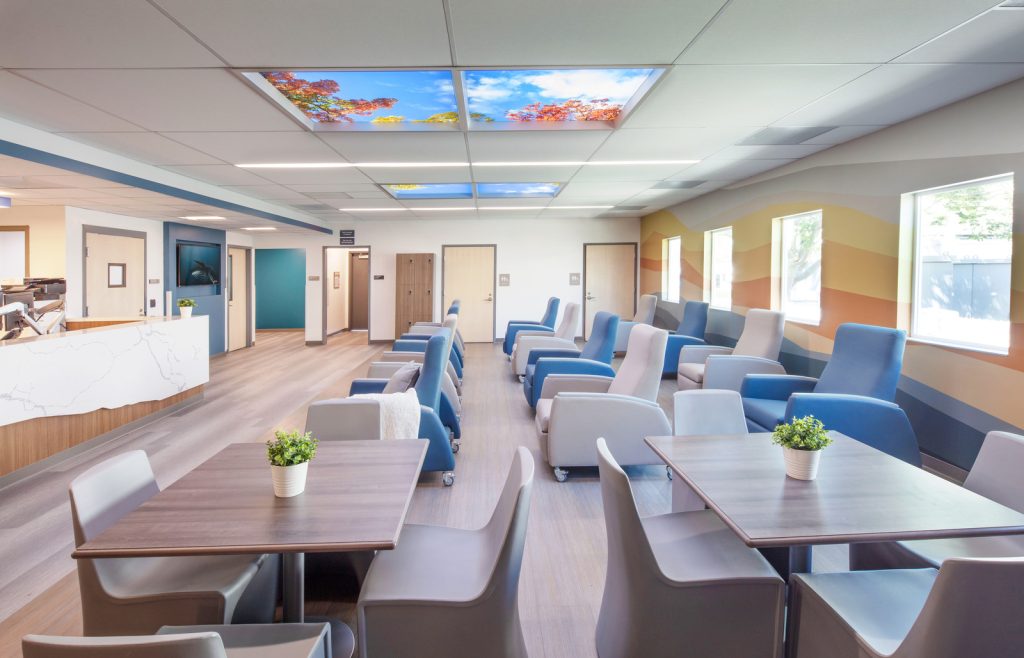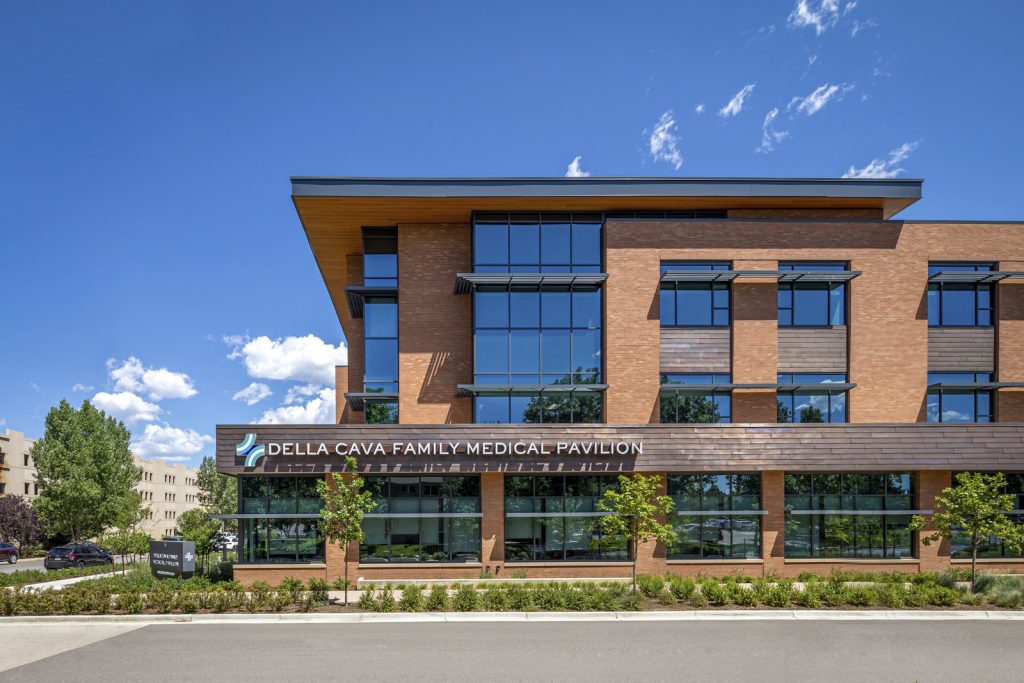Advancing Care In Behavioral Health Through Tunable Lighting
Meredith Banasiak, EDAC
Beyond states of wakefulness and restfulness, it’s commonly accepted that natural light cycles impact people in many ways. Studies have proven there can be long-lasting physical and mental health risks when circadian rhythms are regularly disrupted. Among other symptoms, dysregulated circadian wellness—common in shift workers and frequent flyers who change time zones regularly—have been correlated with increased cancer rates, lower immunity and depression.
While much of this understanding of light’s effects comes from carefully controlled laboratory studies informing practical settings, there are few studies taking place within the more complex healthcare environment. What does that mean for the well-being of patients and staff over the course of lengthy stays and multiple work shifts? And how do we measure the impact?
GETTING IN TUNE
The opportunity to answer these questions arose when Boulder Community Health’s (BCH) new behavioral health unit installed tunable, dynamic white LED lighting—which can mimic the 24-hour cycle of natural light to maintain circadian wellness—to improve and advance the standard of care to staff and patients. This type of installation of a tunable lighting system into the rooms of patients at a behavioral health setting is rare, which prompted the U.S. Department of Energy’s (DoE) Pacific Northwest National Laboratory (PNNL) to seek out Boulder Community Health as a research project. As part of their joint commitment to innovation and research in healthcare design, Boulder Associates partnered with PNNL under research lead and principal investigator Bob Davis, Ph.D., FIES, to conduct a first-of-its-kind research study to explore the possible benefits and design implications of this lighting innovation.
“The design and tunable lighting system of the new Della Cava inpatient behavioral health unit support two strategic patient initiatives,” said Jill Eriksen, RN MSN, Director of Nursing at BCH. “Biophilic design, incorporating the natural world into modern design and circadian rhythm lighting, which mimics the spectrum and progression of natural daylight.
“The biophilic design elements create a calm, healing environment, reducing alienation between patients and the natural world. The environmental elements allow patients to connect with nature and provide a release from mental fatigue and stress and a pathway to cultivate healthy coping skills. The tunable lighting offers visual cues to reinforce the patient’s circadian rhythms. The signals prove a foundation for healthy sleep patterns, increasing patients and staff sense of calm, well-being, and physical health.”
“We’re looking for positive outcomes on circadian health by measuring the effects of light intensity as well as color,” says Meredith Banasiak, EDAC, Assoc. AIA, M. Arch., Design Researcher with Boulder Associates. “This has a lot to do with the recent discovery of non-visual light receptors in the back of our eyes which respond to light to regulate our circadian clock and sleep/wake cycles.
“Tunable lighting can be ‘tuned’ in intensity and color to align with what the sun is doing and support these cycles. These and other new lighting innovations help regulate our circadian systems by suppressing (or not suppressing) the production of melatonin, a hormone which drives sleep.”
“During daytime hours people should be exposed to high-intensity light: blue light, which unfortunately sometimes gets a bad rap,” adds Carolyn Schilling, Associate AIA, LEED, AP BD+C, of Boulder Associates. “During the day, we need blue light—it’s equally as important as darkness is at night to maintain that full 24-hour cycle we need. There’s a specific range of light wavelengths that hangs out in the blue region that boosts wakefulness, alertness, productivity and mood. The light in these wavelength’s range which is found naturally in morning daylight (and synthetically in the mass of electronics with screens) suppresses melatonin. So, it becomes very disruptive to sleep-wake cycles when there is nighttime exposure.
“From a wellness perspective, nighttime workers—in this and any scenario—should have light absent of this wavelength. This is when our bodies want and need warmer light in the orange to red spectrum which rounds out that cycle of natural light and does less to suppress melatonin ensuring fitter sleep patterns.”
In a healthcare environment, this creates a design dilemma based upon competing needs. Night staff need to be alert during their entire shift, and patients need to rest.
Changing the intensity and spectrum of light can support healthy circadian rhythms while also providing important visual cues in an environment. As Davis explains, “Our team evaluated a tunable lighting project in a behavioral health unit in Seattle, and when the evening lighting shifted to be warmer and dimmer, the nursing staff noticed that patients saw the transition as a cue that it was time to head to bed. That’s an example of a good energy saving practice that also helps reinforce desired patient outcomes. The BCH project is exciting because the research team plans to take an in-depth look at a variety of patient and staff outcomes that may be affected by the lighting and the overall environment in the unit.”
In addition, the research team will monitor the use of dimming adjustability features of the lighting systems. This ensures that they have a good record of what the lighting stimulus was, any change in lighting intensity (as well as why the change was made) to ultimately identify user preferences during specific time periods.
USER-BASED RESEARCH
Their research will be based solely upon patient and staff outcomes across 1st, 2nd and 3rd shifts at the inpatient medical center, measuring mood, performance, sleep and behavior. This will be achieved by using staff surveys, anonymized patient data, sleep data and wearable lighting measurement sensors. The resulting data will be compared across three different lighting conditions:
- The existing fluorescent lighting system in the old unit at Boulder Community Health
- The new LED lighting system with variable intensity but static color located in the new unit
- The new LED lighting system with variable intensity and variable spectrum located in the new unit
One of the more unique tools in achieving this user data is a wearable light meter which records an individual’s light health. This Scandinavian-designed device, a small, sensor-enabled disc called a LYS, measures light intensity, color and user movement (Lux, Kelvin, RGB, movement, geo-location). Working similarly to a Fitbit, LYS features a downloadable app compatible with both Apple and Android devices; it was designed for people to track and monitor circadian health in real time.
For the study, the BCH health staff wear them for a week at a time, while the research team collects the data from each of the experimental conditions. Over the course of a day, the app will track how close they are to meeting their daylight and sleep ready goals.
ILLUMINATIONS AND IMPLICATIONS
Research began in November of 2018, with a second phase to follow in April 2019 and a third phase to commence in July 2019. All told, data from over 100 patients and about 30 staff per phase of research is expected. The researchers are hoping to ultimately identify, compare and evaluate the lighting implications in order to recommend the next steps for improving the lighting standard of care in behavioral health inpatient facilities.
Banasiak concludes: “We’re expecting the results of both our design and research to have long-term and wide-reaching impact in adding new precedent and knowledge to the field of healthcare design and healthcare design research.”

